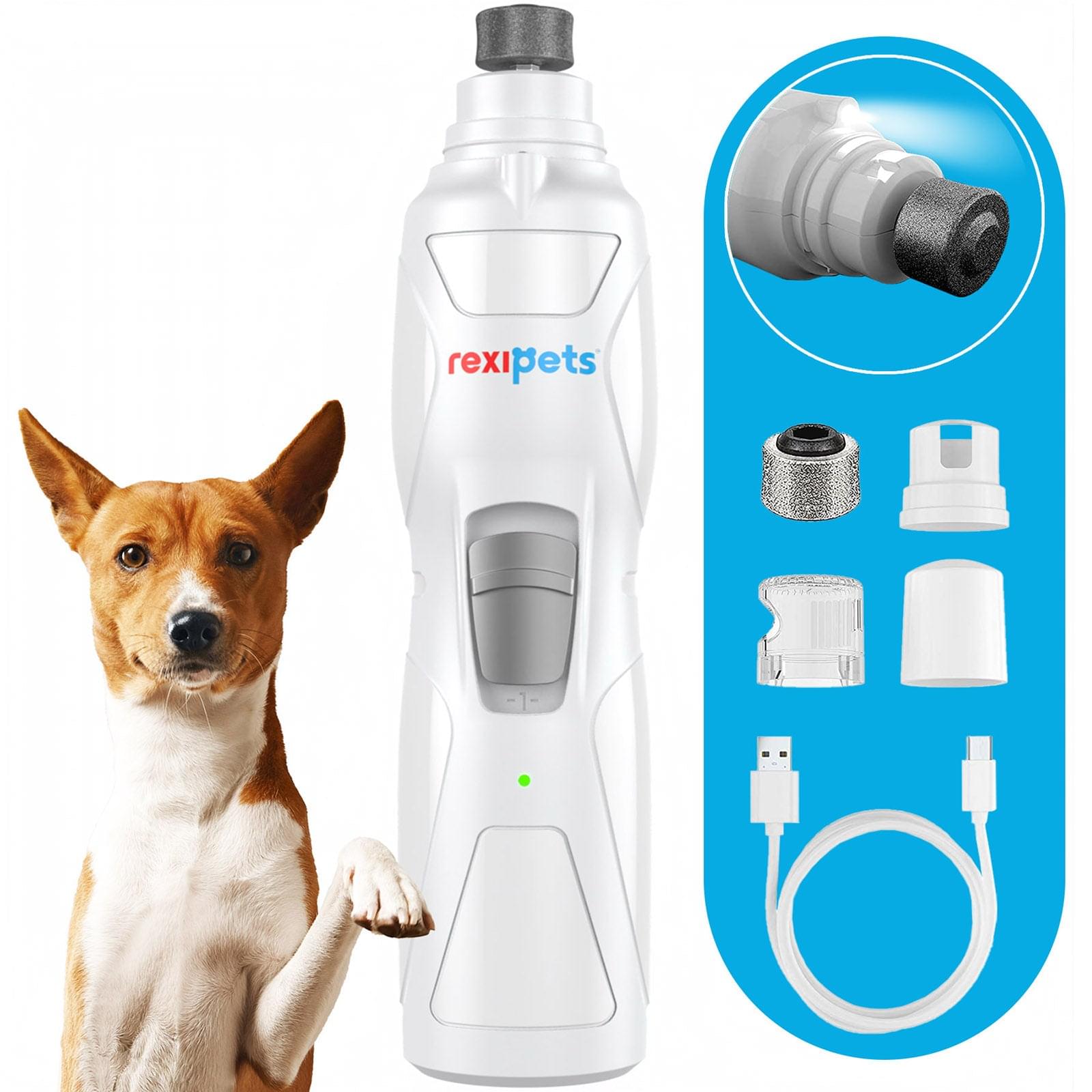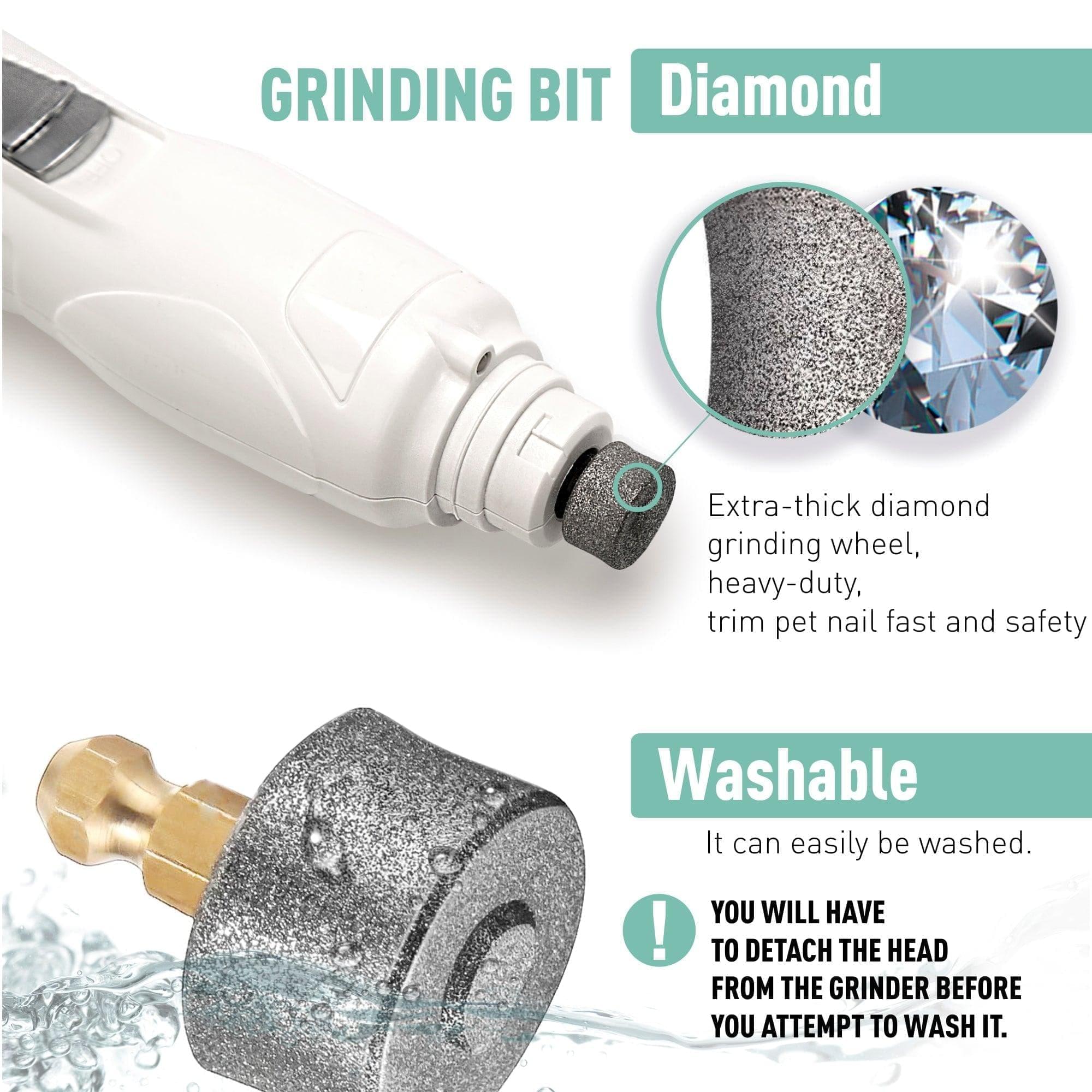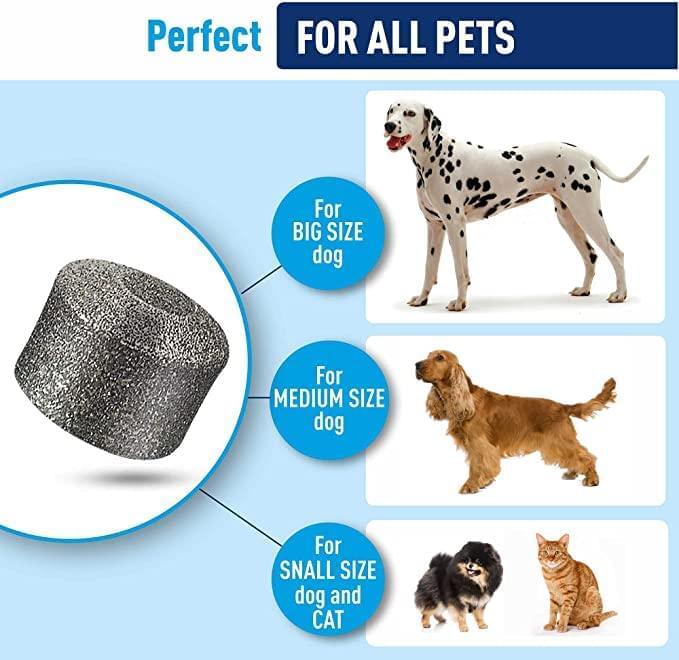
Does just thinking about cutting your dog's nails send chills down your spine? Does it feel like going to war with your dog on an otherwise calm Sunday afternoon? Well, we have all been there and done that!
Today, we will take you through the step-by-step process of cutting your dog's nails efficiently.
We will also be talking about tips to make the process less dreadful for you and your dog. After completing this blog, we hope you will emerge as a well-informed and prepared pet parent.
So, put your learning hat on and jump in to learn all you need to know about dog nail clippers and how you can use them without hurting yourself or your dog!
What Are Dog Nail Clippers? - An Overview
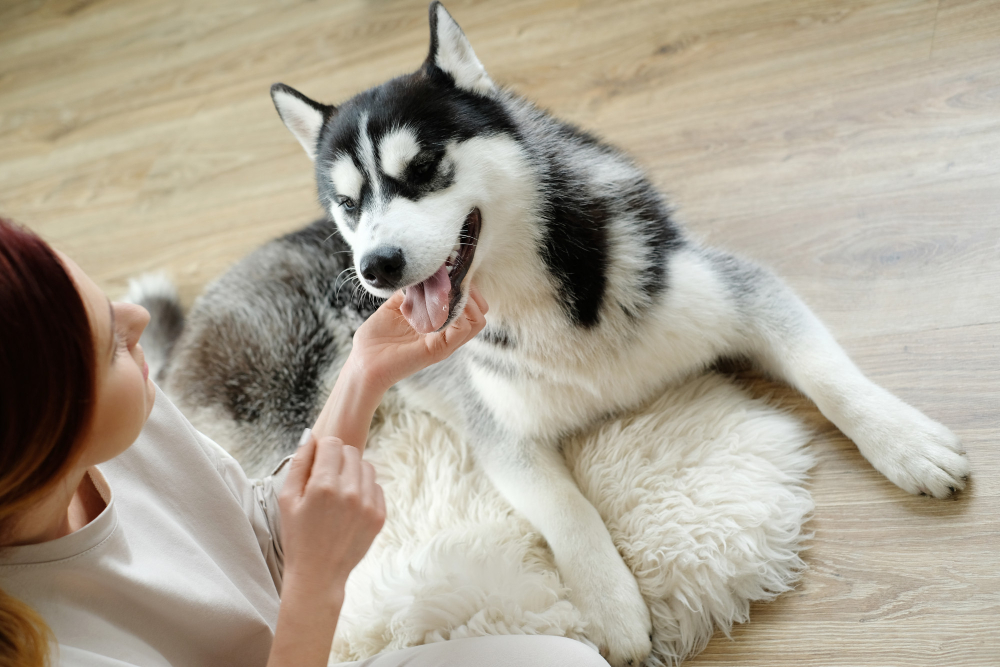
Dog nail clippers are essential tools for grooming your pet. They help keep your pup's nails trimmed and healthy, allowing them to move comfortably and avoiding potential injuries.
Dog nail clippers come in various shapes and sizes, thus making it easy to find the perfect one for your pup's needs. Let's discuss the different types of dog nail clippers available so that you can choose the right one for your beloved pet.
Types Of Dog Nail Clippers
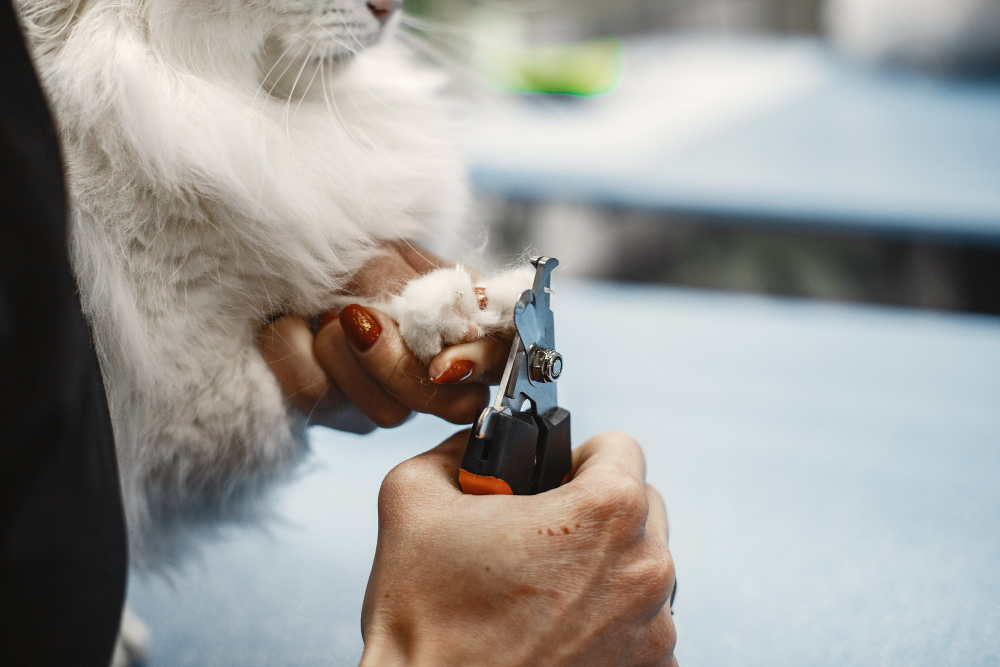
There are mainly three types of dog nail clippers available in the market. Each has its pros and cons, and it is up to you to assess and decide which is best for your dog.
Let's compare the different kinds of dog nail trimmers. For that, we will assess their qualities such as effectiveness, cutting style, and durability. So you can pick the right one for you and your pup.
-
Type 1 - Scissor Nail clippers
These are the most popularly used nail clippers available in the market. They have a conventional scissor mechanism and are easy to use.
One good thing about Scissor nail clippers is that they come with an ergonomic handle. The handle fits better in your palm, thus making it convenient and easy to use.
These clippers are better suited for dogs of big breeds with thick nails. The clippers let you use additional force to deal with sturdy overgrown nails.
But for the same reason, they might not be a good option for younger dogs, small-breed dogs, or dogs with arthritis.
-
Type 2 - Guillotine nail clippers
Guillotine-style dog nail clippers are less popular but very effective compared to dog nail clippers. These dog clippers typically have a hole where the dog's nail is supposed to go. This makes it easier to trim the nail. It also helps prevent cutting the quick.
The way it works is that a blade slides over the hole and cuts your dog's nail when the handle of these dog nail clippers is squeezed.
It isn't an ideal tool to effectively cut big-breed dogs' thick and long nails. This is why this design is best suited for small or medium-sized dogs.
However, one drawback is that the blades require more frequent sharpening or replacement to maintain the tool's cutting ability.
-
Type 3 - Dog Nail Grinder
Lastly comes the dog nail grinder. It isn't typically a clipper but deserves honorable mention when discussing dog nail trimming. The question is usually: dog nail grinder vs clipper - which is better? Well, they have their own perks.
A dog nail grinder is basically a nail-trimming device typically cordless and battery-powered. It has a tiny rotating section of unique, abrasive sandpaper material. This material grinds down the dog's nails gradually.
A dog nail grinder is less common than manual nail clippers due to the newer technology and its higher price.
A grinder wears down the dog's nails through friction between the nails and the abrasive rotating head. The grinders usually come with replaceable rotating heads that you can choose according to your dog's nail type. This makes the machine entirely customizable for your needs.
A dog nail grinder can be regarded as one of the safest options for your dog nail trimming needs. A downside to this tool is that the sound of the grinder can induce anxiety in some dogs. Grinding or filing nails to the needed or desired shape and length can also be a time-consuming process and requires patience.
The Nail Trimming Phase: Step by Step
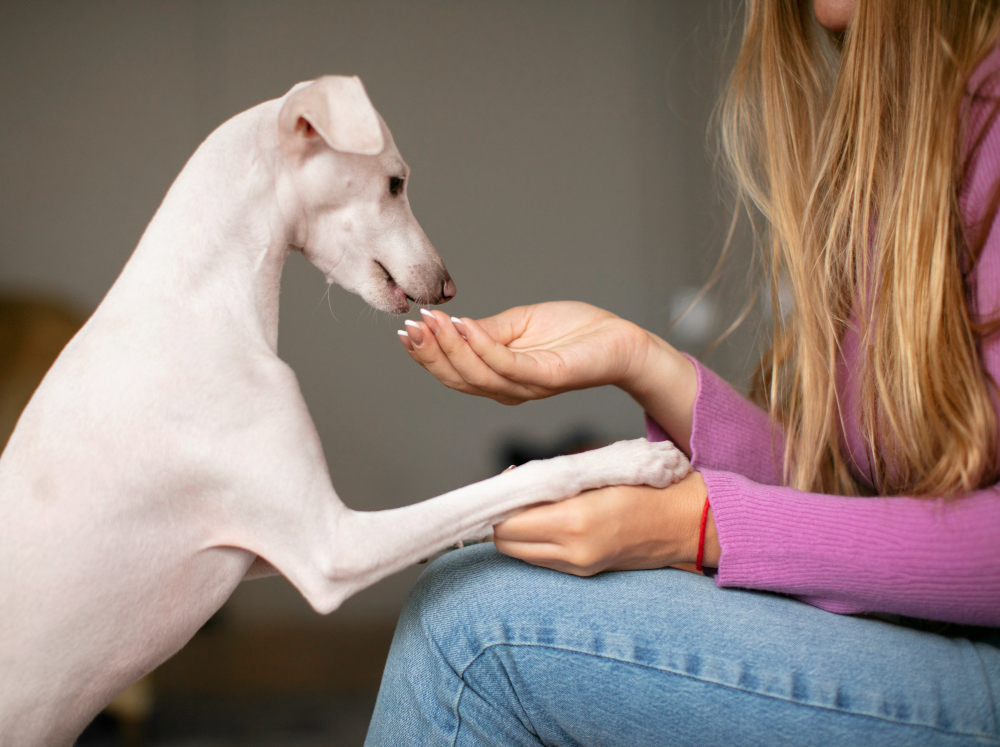
Now that you know the basics of all the types of nail trimming tools, let's jump in and find out how you can use them.
-
Step 1 - Choosing the right clipper
Choosing the right clipper is extremely important when trimming your dog's nails. Using a scissor-style nail clipper is ideal if you have a big dog with thick and dark nails.
Whereas, if you have a smaller dog with thinner nails, guillotine nail clippers are better suited for their nail care.
A nail grinder can be used entirely for all types and breeds of dogs. You can use this with scissor-style nail clippers or guillotine nail clippers as a nail file to remove the sharp edges.
-
Step 2 - Getting your dog comfortable
Once you have chosen the most suitable nail clipper for your dog, it's time to familiarize your dog with it.
Introducing the clipper to your dog is very important. Let them have a whiff of it and see it correctly so that they don't feel threatened by it. Not doing so can cause stress and anxiety in your dog and may cause them to act out.
-
Step 3 - Hold and tilt
Gently yet securely hold the first toe. Hold your nail clipper at a slight angle according to the nail's natural curvature. This way, you can imitate the natural shape of your dog's nails and leave minimum sharp edges when you trim nails.
Ensure you do not make a side-to-side cut and only cut just the tip of the nail when making the first cut.
-
Step 4 - Observe and avoid the quick
Continue to make small cuts on your dog's nails until you see a nail-colored circle in the tip of your dog's nails. Make sure you do not go past this circle.
A vein, called a quick, runs through the nail; the quick will bleed if clipped. As the nail-colored circle is near the quick, it is best to avoid cutting past it.
It is important to note that it is harder to locate the quick if your dog has dark nails. So, be extra careful when trimming black nails. For light nails, you will be able to easily locate the quick.
-
Step 5 - In case of cutting the quick
Use styptic powder or corn starch to stop bleeding if you cut too quickly. When applying the powder to the nail, apply a little pressure, and it will stop bleeding.
After a few minutes, if the bleeding has not stopped, call your vet right away!
-
Step 6 - File down nail edges
Once the nails are all cut, it is essential to file them down to get rid of the sharp edges. Getting rid of these sharp edges is necessary for you and your dog's safety, as they can hurt you or themselves with it.
You can use the conventional emery board for this purpose or use a grinder to complete the process more efficiently.
-
Step 7 - Reward your dog
Finally, remember to reward your dog for their cooperation and good behavior.
Give them plenty of treats, praise, and cuddles for their good behavior. This creates a positive association with nail trimming and helps stop your dog from acting out at the sight of a nail clipper.
Make sure you take breaks to play with and snuggle them. This will help make the process more enjoyable for you and your furry friend.
Remember, nail trimming is not just a purely functional task that has to be done just for the sake of being done. It is also a fantastic bonding exercise between you and your dog.
Safety Tips for Trimming a Dog's Nails
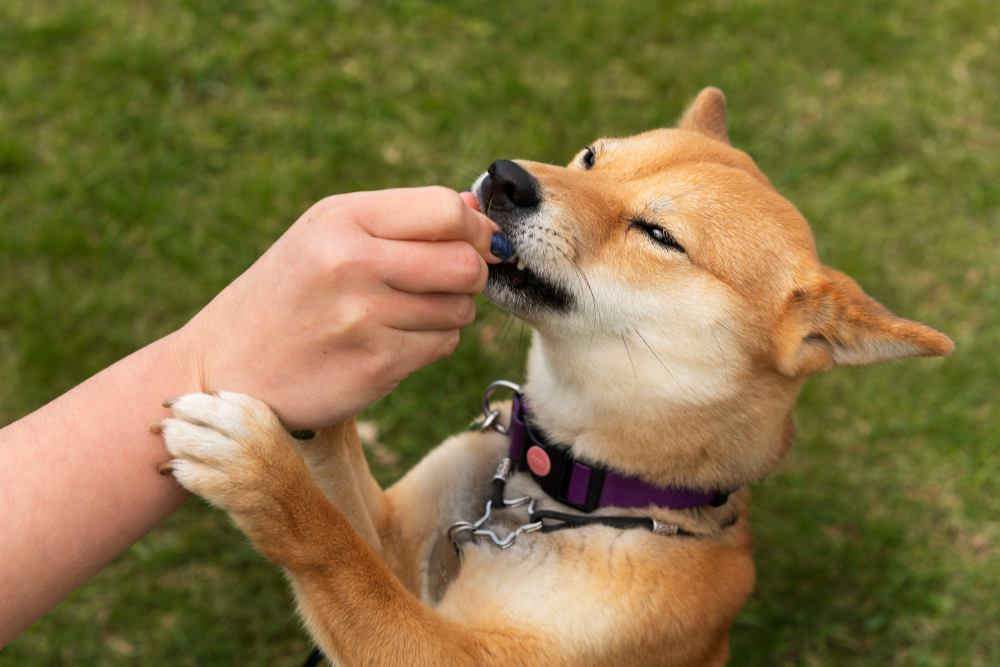
Now that you know how to clip your dog's nails safely, let's take you through the following tips to help you prepare yourself and your dog for a paw-some grooming session.
Begin training early
It is ideal to be training your puppy via cooperation. 'Touch for a treat' is a popular way to do so. Also, getting a big dog accustomed to getting their nails trimmed is a lot harder than training a puppy.
Trim your pup's nails frequently
It is essential to regularly cut your dog's nails. It is crucial to do so as the longer you wait to cut your dog's nails, the longer the quick growth will be inside the nail. This will increase the chances of accidentally cutting it as you care for your dog's nails.
Be careful when using a grinder
While professionals suggest the grinder, make sure you are extra careful while using it with fur on the dog's paw. The fur can wrap up in the rotating head and hurt your dog.
Keep styptic powder handy
It is essential to always hope for the best and prepare for the worst. If you accidentally cut your dog, styptic powder comes in extremely handy. It is an antiseptic clotting agent that rapidly stops bleeding of the quick.
All you have to do is apply some of it on the wound and apply some pressure. The styptic powder will take care of the rest.
Listen to your dog
Our dogs cannot speak and voice their pain as we can, so it is essential to read your dog's body language and see what they are comfortable with.
Important Note: For example, the clicking sound of the clipper may not scare your dog, but the buzzing sound of the grinder may make them anxious. It is essential to observe your dog and his behavior so that you can address their needs in a better way.
Have a vet on speed dial
This isn't just specifically a tip for cutting your dog's nails but generally for your dog's safety, as accidents happen. If anything goes wrong, it is essential to have a veterinarian you can contact who can walk you through the process of first aid.
GO to a grooming center
Remember, if you feel overwhelmed by the process, it is entirely ok to go to a grooming center and get a professional to trim the nails.
You can also turn this into a learning exercise as you can observe how the specialist does this task and utilize them when you feel ready to trim your dog's nails yourself.
Final Words!

Clipping your dog's nail should not equate to you going to war with your dog. Trimming your dog's nails for their health and well-being is essential. Knowing how to do it safely is even more critical, as you can unknowingly hurt them while caring for their nails.
Remember, it is entirely ok to ask for help from a family member or professional to help you through this process. We know it can be overwhelming to deal with it on your own.
So we hope that now you know how to choose the appropriate dog grooming tools, how to trim your dog's nails, and are familiar with the safety guides to go through the process with caution.
Happy grooming!









